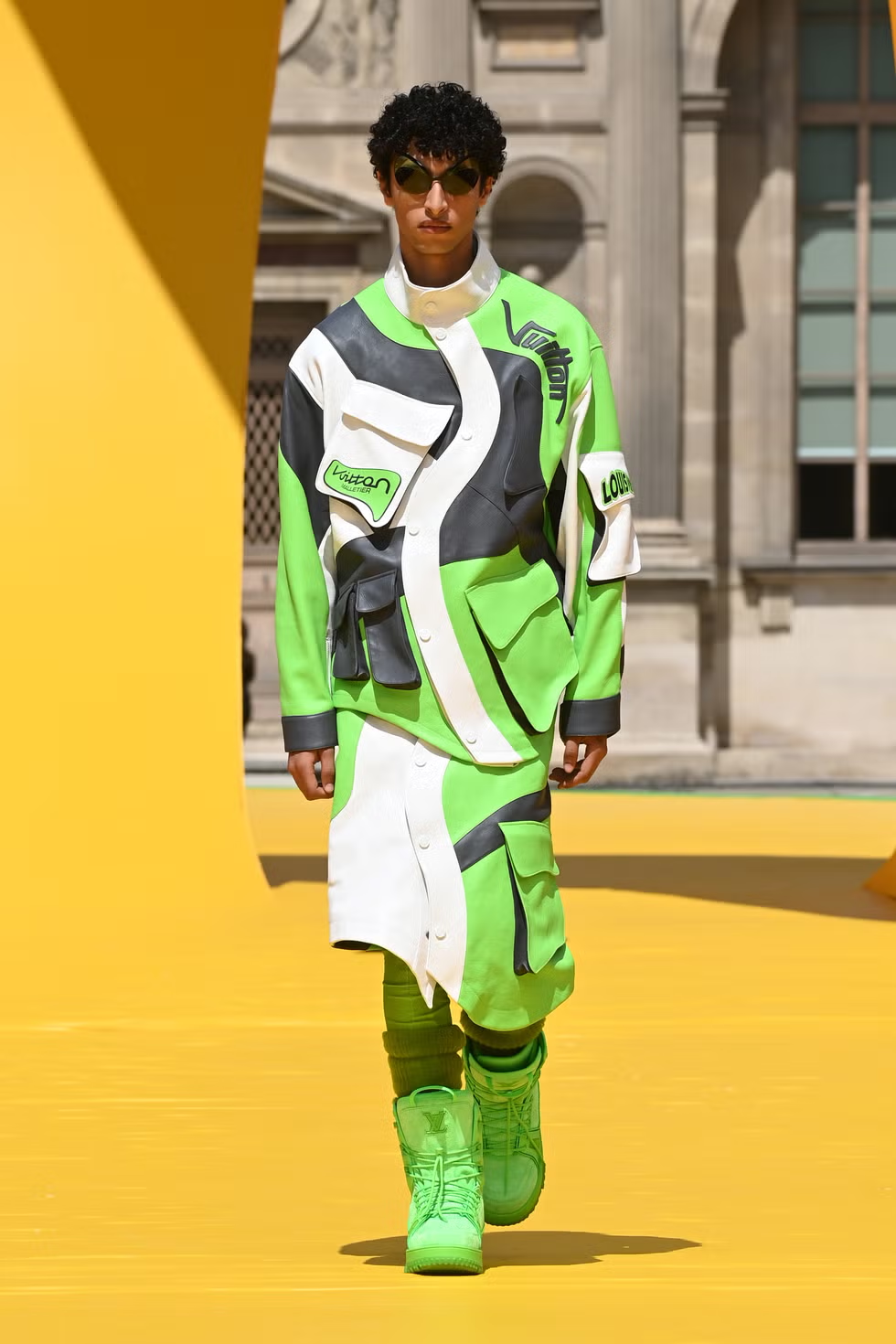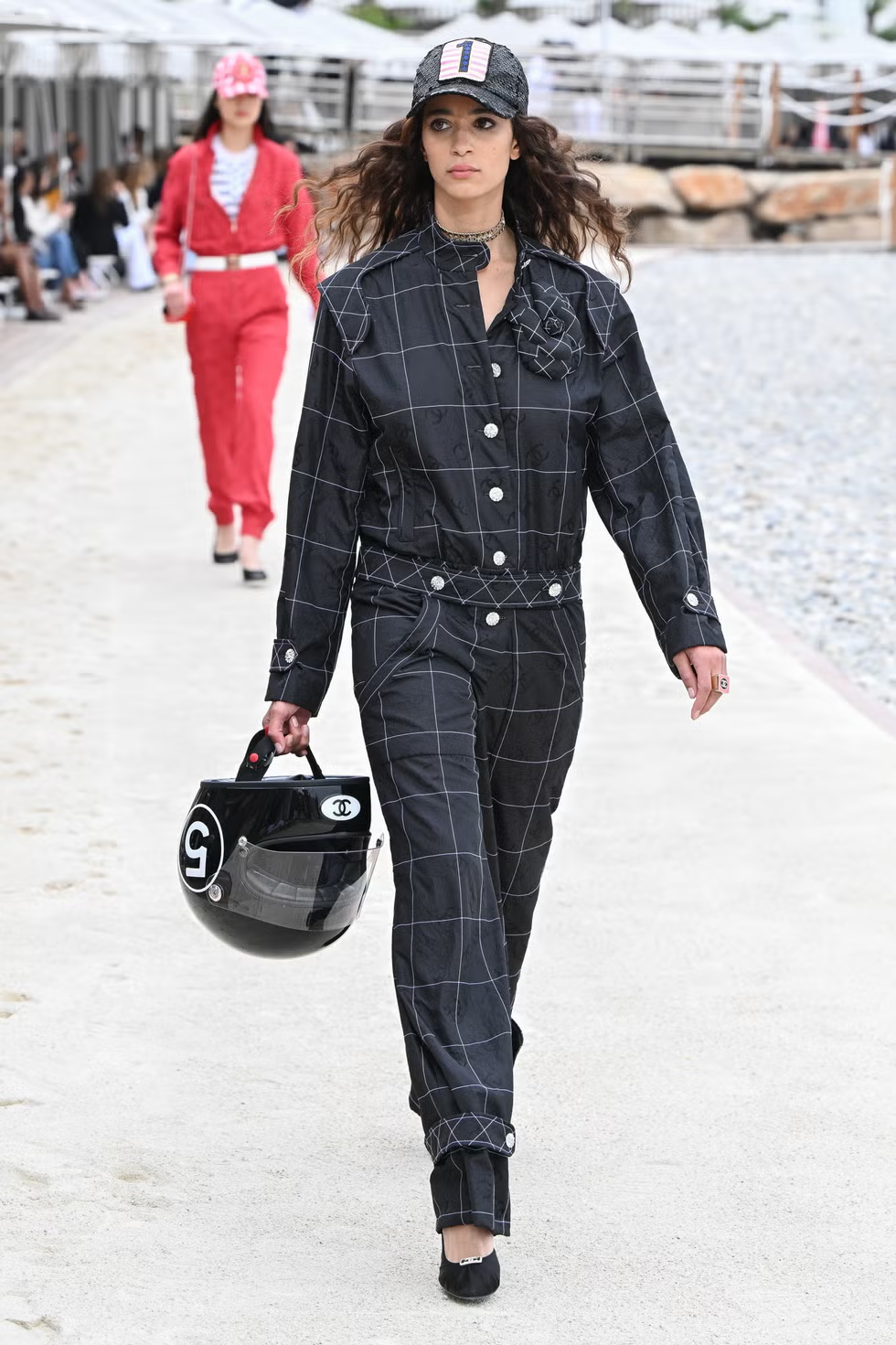In the Slipstream of Style: How Formula 1 Became Fashion’s Fastest Fantasy
- Maheshwari Raj
- Jul 9
- 4 min read
At the British Grand Prix, the engines roared but so did the wardrobes. What draws women, luxury, and culture to this sport of speed and spectacle?

At Silverstone this past weekend, Formula 1’s British Grand Prix delivered exactly what the world expected: blistering laps, dramatic overtakes and an impeccably dressed paddock.
Lewis Hamilton, the sport’s most decorated driver and 2025 Met Gala co-chair, arrived in a tailored Wales Bonner ensemble that blurred the line between driver and muse,recently telling GQ: “Fashion has given me confidence on and off the track. It’s a way to express myself when everything else feels controlled.” Charles Leclerc, the face of Armani, exuded quiet charisma. Carlos Sainz, now L’Oréal’s global ambassador, embodied rugged refinement.
For decades, Formula 1 has been the sport of kings, heirs, and tycoons, its history steeped in old money, champagne rituals, and Monte Carlo balconies. But in 2025, something else is happening: the cultural gates have swung open.
The sport remains elite but the audience is expanding, younger, and markedly more diverse. What was once a spectacle reserved for Europe’s aristocracy is now a global stage where millions tune in not just for speed, but for story.
What’s Changed? From Insular to Intimate

F1 has always dripped with luxury — Ferrari reds, TAG Heuer timepieces, Gulfstream jets waiting at the airport. But what it lacked was accessibility.
The shift began in 2019 with Netflix’s Drive to Survive, which distilled the rivalries, heartbreak, and ambition into bingeable arcs. Suddenly, even those who couldn’t tell a soft tyre from a hard one found themselves invested in the human drama.
According to Nielsen Sports, F1’s global fanbase swelled to 750 million by 2024, up 35% from 2019. Social media amplified the effect: TikTok’s #F1Fashion alone boasts over 280M views, proving the allure extends far beyond the asphalt.
"Formula 1 has always been glamorous, now, it’s just better lit," noted Harper’s Bazaar UK in a feature on F1’s fashionable renaissance.
Why Are Fashion and Beauty Brands Paying Attention?

For luxury brands, F1 offers something rare: authentic tension. Precision at 300 km/h. Obsession and control under chaos. A travelling fashion week that stops in Singapore, Miami, and Monaco.
The partnerships reflect that shared sensibility:
Carlos Sainz & L’Oréal: Redefining masculine beauty with grit and polish
Charles Leclerc & Emporio Armani: Bringing Mediterranean elegance to the grid
Lewis Hamilton & Wales Bonner/Tommy Hilfiger/Valentino: Turning the driver into a cultural icon.
Puma, Moncler, Louis Vuitton: Dropping F1-themed capsules that sell out within hours
What’s different today isn’t that fashion discovered F1, it’s that they’ve learned to speak its language to new audiences.
Why Are Women Watching and Leading?

For much of its history, women in F1 were sidelined to the roles of “grid girls” or “wives and girlfriends.” That era is over. Today, they are engineers, journalists, podcasters, and the creators of viral TikTok recaps that dissect tyre strategy and paddock outfits alike.
In 2024, women make up 40% of F1’s global fanbase, according to Nielsen Sports, with female attendance at Silverstone doubling in the past five years. What draws women in? The stories. The stakes. The style.
"It’s no longer about engines — it’s about characters," wrote Russh Magazine, describing the rise of Grid Girls 2.0: engineers, commentators, and superfans creating TikToks, styling race-day looks, and interrogating strategy. For many women, it isn’t about horsepower, it’s about the human stories, the audacity to compete at the edge of control, and the aesthetic of the entire spectacle.
Even the paddock itself has become a runway. Who What Wear called Monaco’s grid “the new Met Gala,” with Priyanka Chopra Jonas, Bella Hadid, Zendaya, and Rihanna turning up in couture and setting Instagram ablaze.
Even If You Don’t Care About Racing…

You don’t need to understand pit stops or tyre compounds to feel the spectacle.
Every Grand Prix is a theatre of identity: athletes in bespoke fireproof suits, supermodels in archival Dior, fans in curated ‘grid-core’ looks, all participating in a global ritual of ambition and aesthetics.
For fashion, F1 is more than a sponsorship opportunity. It’s a story worth wearing.
The Last Lap

The British Grand Prix reminds us: Formula 1 was never just about the cars. It has always been a meditation on craftsmanship, courage, and charisma — qualities luxury has mirrored for decades.
What’s changed is not the sport’s essence but its openness: women claiming their place, fans narrating their own stories, and fashion houses designing not just for drivers but for the millions watching from home.
In the fusion of couture and carbon fibre, we find a reminder that elegance and adrenaline are not opposites, they are companions.








Comments